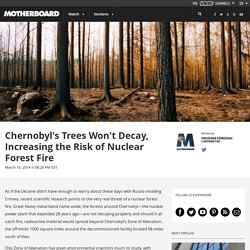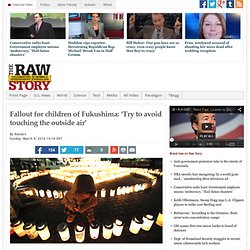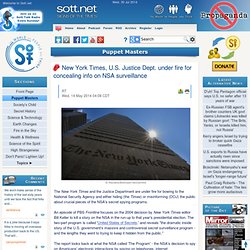

Chernobyl's Trees Won't Decay, Increasing the Risk of Nuclear Forest Fire. As if the Ukraine didn’t have enough to worry about these days with Russia invading Crimea, recent scientific research points to the very real threat of a nuclear forest fire.

Great heavy metal band name aside, the forests around Chernobyl—the nuclear power plant that exploded 28 years ago—are not decaying properly and should it all catch fire, radioactive material would spread beyond Chernobyl’s Zone of Alienation, the off-limits 1000 square-miles around the decommissioned facility located 68 miles north of Kiev. This Zone of Alienation has given environmental scientists much to study, with insects choosing to not live there and the birds that do live there developing abnormalities like deformed beaks, odd tail feather lengths, and smaller brains. The trees too, have been shady. Image: Inside Pripyat, one of Chernobyl's evacuated cities/Eero Nevaluoto. Five Things You Need to Know About the Radioactive Plume Approaching the West Coast. The radioactive plume of contaminated water said to be heading across the Pacific Ocean after Japan’s 2011 Fukushima nuclear disaster will reach the United States within a month, scientists now think.

Tuesday marks the third anniversary of the earthquake, tsunami and nuclear disaster, known in Japan as 3.11. The disaster killed nearly 16,000 people and left more than 2,000 unaccounted for in vast areas of its northern coast. Since then, the country has struggled to rebuild tsunami-hit communities and to clean up radiation from the nuclear crisis. About 50,000 people from Fukushima are still unable to return home due to concerns over radiation. Officials comb the area for any signs of missing people three years after the disaster in Namie, near the striken TEPCO Fukushima Dai-ichi nuclear plant in Fukushima prefecture on March 10, 2014, one day before the third anniversary of the March 11, 2011 massive earthquake and tsunami.
Where and when? It is expected to hit the U.S. in April. Fallout for children of Fukushima: ‘Try to avoid touching the outside air’ By Toru Hanai and Elaine Lies KORIYAMA, Japan (Reuters) – Some of the smallest children in Koriyama, a short drive from the crippled Fukushima nuclear plant, barely know what it’s like to play outside — fear of radiation has kept them in doors for much of their short lives.

Though the strict safety limits for outdoor activity set after multiple meltdowns at the Fukushima Dai-ichi nuclear plant in 2011 have now been eased, parental worries and ingrained habit mean many children still stay inside. And the impact is now starting to show, with children experiencing falling strength, lack of coordination, some cannot even ride a bicycle, and emotional issues like shorter tempers, officials and educators say. “There are children who are very fearful. They ask before they eat anything, ‘does this have radiation in it?’ “But some really, really want to play outside. One mother at an indoor Koriyama playground was overheard telling her child: “Try to avoid touching the outside air”.
Radiation from Fukushima to reach West Coast in April. On the third anniversary of the Fukushima nuclear plant incident, scientists are reporting that low levels of radiation from the Fukushima plant will reach ocean waters along the U.S.

West Coast by April 2014. The scientists say that the radiation will be at levels too low to harm humans, but they call for more monitoring, including at the federal level. Projected range of radiation-contaminated seawater from Fukushima // Source: noaa.gov On the third anniversary of the Fukushima nuclear plant incident, scientists are reporting that low levels of radiation from the Fukushima plant will reach ocean waters along the U.S. West Coast by April 2014. USA Today reports that currently, no federal agency samples Pacific Coast seawater for radiation. In July 2013 the Tokyo Electric Power Company, which operates the Fukushima Daiichi nuclear power plant, reported that contaminated water stored underground leaked into the ocean. New York Times, U.S. Justice Dept. under fire for concealing info on NSA surveillance.
© Reuters/Brendan McDermid The New York Times and the Justice Department are under fire for bowing to the National Security Agency and either hiding (the Times) or misinforming (DOJ) the public about crucial pieces of the NSA's secret spying programs.

An episode of PBS Frontline focuses on the 2004 decision by New York Times editor Bill Keller to kill a story on the NSA in the run-up to that year's presidential election. The two-part program is called 'United States of Secrets,' and reveals "the dramatic inside story of the U.S. government's massive and controversial secret surveillance program - and the lengths they went to trying to keep it hidden from the public. " The report looks back at what the NSA called 'The Program' - the NSA's decision to spy on Americans' electronic interactions by spying on telephones, internet communications, metadata from emails, and almost all forms of electronic communications - all without warrants.
But readers cried foul. Sens.